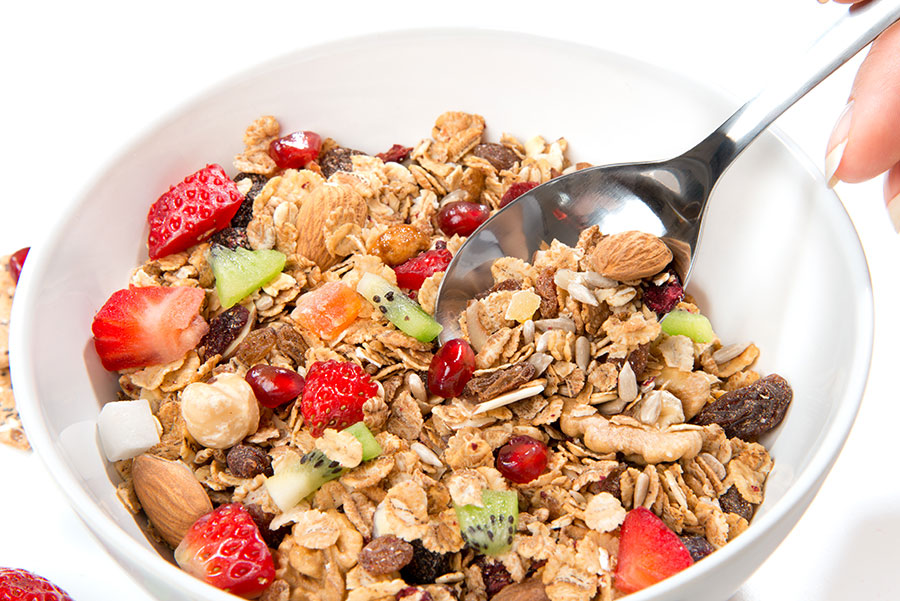Fiber is an important nutrient that can play a major role in blood sugar control. It is a type of carbohydrate that is not broken down and absorbed by the body, but rather passes through the digestive system largely intact. This unique property of fiber can help regulate blood sugar levels, prevent spikes in insulin, and improve overall metabolic health. In this article, we will explore the benefits of fiber for blood sugar control and provide tips on how to incorporate more fiber into your diet.
How does fiber help regulate blood sugar levels?
When we eat carbohydrates, our body breaks them down into glucose, a type of sugar that is absorbed into the bloodstream. The hormone insulin is then released to help transport glucose from the bloodstream into the cells where it can be used for energy. However, in some individuals, this process does not function properly, leading to high blood sugar levels and insulin resistance, which can eventually progress to type 2 diabetes.


Fiber can help regulate blood sugar levels by slowing down the absorption of glucose from the digestive system into the bloodstream. This is because fiber slows down the rate at which carbohydrates are broken down and absorbed, which can prevent spikes in blood sugar levels and the subsequent release of insulin. In addition, fiber can also help improve insulin sensitivity, making it easier for insulin to transport glucose into the cells.
What are the different types of fiber?
There are two main types of fiber: soluble and insoluble. Soluble fiber dissolves in water and forms a gel-like substance in the digestive tract. This type of fiber can help lower cholesterol levels and slow down the absorption of glucose from the digestive system into the bloodstream. Good sources of soluble fiber include oat bran, beans, lentils, nuts, and some fruits and vegetables.
Insoluble fiber, on the other hand, does not dissolve in water and passes through the digestive system largely intact. This type of fiber can help promote regular bowel movements and prevent constipation. Good sources of insoluble fiber include whole grains, vegetables, and fruits.
What are some high-fiber foods?
There are many high-fiber foods that can be incorporated into a healthy diet. Here are some examples:
- Whole grains: Whole grain bread, pasta, and rice are excellent sources of fiber. Look for products that contain at least 3 grams of fiber per serving.
- Vegetables: Leafy greens, broccoli, carrots, and sweet potatoes are all high in fiber. Aim to include a variety of colorful vegetables in your diet.
- Fruits: Berries, apples, pears, and bananas are all good sources of fiber. However, be mindful of portion sizes as some fruits can be high in natural sugars.
- Legumes: Beans, lentils, and chickpeas are all high in fiber and can be used in soups, salads, and stews.
- Nuts and seeds: Almonds, chia seeds, and flax seeds are all good sources of fiber and can be added to smoothies, oatmeal, and yogurt.
How can I incorporate more fiber into my diet?
If you are not used to eating a high-fiber diet, it is important to increase your fiber intake gradually to prevent digestive discomfort. Here are some tips to help you incorporate more fiber into your diet:

- Start your day with a high-fiber breakfast: Oatmeal, whole grain toast, and fruit are all great options.
- Swap refined grains for whole grains: Choose whole grain bread, pasta, and rice instead of their refined counterparts.
- Snack on fruits and vegetables: Keep cut-up vegetables and fruit on hand for a quick and healthy snack.
- Add legumes to your meals: Try adding beans or lentils to soups, stews, and salads.
- Choose high-fiber snacks: Nuts, seeds, and air-popped popcorn are all great high-fiber snacks.
- Read food labels: Look for products that contain at least 3 grams of fiber per serving.
- Drink plenty of water: Drinking water can help prevent constipation and keep your digestive system healthy.
It is recommended that adults consume at least 25 grams of fiber per day for women and 38 grams per day for men. However, many people do not meet these recommendations. Incorporating more high-fiber foods into your diet can help regulate blood sugar levels, improve gut health, and lower the risk of chronic diseases such as heart disease and diabetes.
In conclusion, fiber is an important nutrient that can play a major role in blood sugar control. By incorporating more high-fiber foods into your diet, you can improve your metabolic health and prevent chronic diseases. Remember to start gradually and drink plenty of water to prevent digestive discomfort. Consult with a healthcare professional or a registered dietitian if you have any concerns about your diet or blood sugar control.










